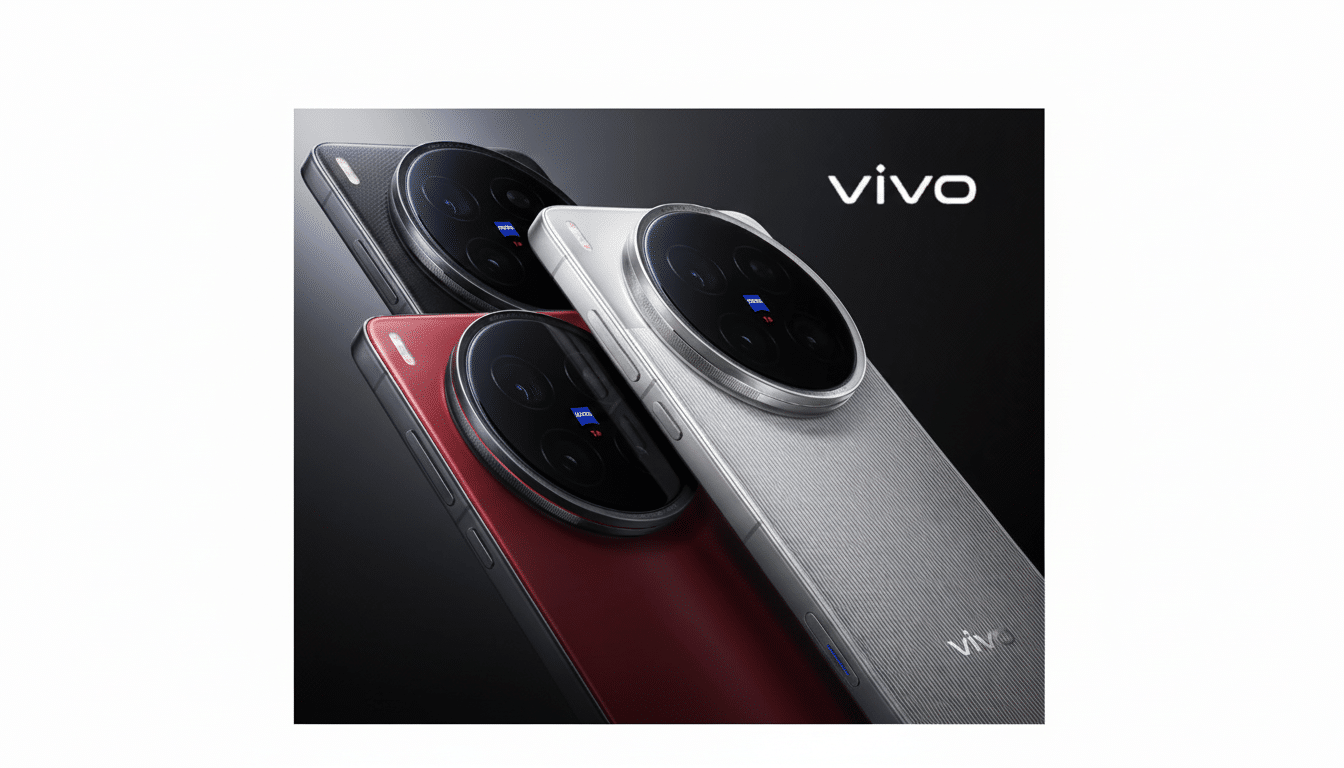A fresh leak suggests the next Vivo Ultra is set to make a headline-grabbing camera leap. Per the reputable tipster Digital Chat Station on Weibo, the Vivo X300 Ultra will be the world’s first smartphone to feature two 200MP rear shooters in addition to another 50-megapixel sensor. The device is also expected to be powered by the next-gen Snapdragon 8 Elite Gen 5 from Qualcomm and come with a 6.8-inch flat 2K display. The X200 Ultra is still new, and the X300 series are out there already – so expect to see this iteration appear later, sometime in 2026.
Dual 200MP sensors and what they could mean for imaging
200MP primary cameras are no longer particularly unusual (Samsung’s ISOCELL HP2 and various high-res sensors have been in a number of flagships) but two 200MP modules on the same phone would be a first.
- Dual 200MP sensors and what they could mean for imaging
- Staying with the 35mm main camera formula and trade-offs
- Silicon and imaging pipeline powering multi-camera capture
- Display and design expectations for Vivo’s next Ultra
- Context from the X200 Ultra and its current camera setup
- Timing and the field of competitors in the 2026 timeframe
- What to watch next as details and specifications emerge

The benefit is not merely headline numbers. In addition, ultra-high pixel counts allow higher levels of pixel binning for cleaner low-light output, lossless or near-lossless cropping, and added detail for textures and foliage. Should Vivo follow a 200MP main with a 200MP ultrawide or telephoto, the phone may shoot with consistent color and detail from wide to tight (a long-standing issue on even premium phones).
But there’s also an interesting macro angle. A 200MP ultrawide could potentially use dense pixel data and close-focus optics to offer sharper, more natural macro shots than the standard 12MP or 50MP ultrawides. On the telephoto side, a 200MP sensor means tighter crops are possible without getting that somewhat notorious watercolor effect typical when you digitally extend beyond a lens’s optical range.
Staying with the 35mm main camera formula and trade-offs
The leak also hints that Vivo is set to stick with its 35mm-equivalent main camera – an unusual selection in a world filled with options for 23–24mm “ultrawide-ish” mains. A 35mm perspective is much more natural with less edge distortion, while also forcing the user to get closer to their subject. On the X200 Ultra, that 35mm main was 50MP; for the X300 Ultra, it’s currently unknown if the 200MP would go to the primary, as with the ultrawide, or if it would be shared across the arrangement. If and when that does jump up to 200MP, I’m expecting some pretty aggressive multi-frame processing to ensure noise and highlight roll-off are under control.
Silicon and imaging pipeline powering multi-camera capture
Powering the X300 Ultra could be the Snapdragon 8 Elite Gen 5 under the hood. But Qualcomm’s latest Elite-class silicon would likely bring a faster ISP and beefier on-device AI for scene segmentation, depth mapping, and motion tracking — all of which are essential elements to merging data from two or more 200MP sensors. Vivo’s existing ZEISS tie-up has brought excellent optics and color science in recent generations, so a more capable ISP/NPU combination might elevate multi-camera consistency — where challenging mixed lighting and 4K/8K video stabilization is concerned.

Display and design expectations for Vivo’s next Ultra
The Ultra is said to sport a 6.8-inch flat 2K panel, a logical upgrade from the X200 Ultra’s already great oversized 6.82-inch one. This will likely mean high refresh rates, LTPO power saving and peak brightness calibrated to fight all the evil outdoor light. Vivo has also looked to fancy stabilization hardware on recent models—think gimbal-like OIS—so a sturdier housing, and improved thermal management, would make sense if it intends to push longer bursts of multi-frame capture and high-bitrate video.
Context from the X200 Ultra and its current camera setup
The X200 Ultra is winning over reviewers with its 35mm 50MP main, a better-than-prime ultrawide at 50MP, and then an 85mm 200MP telephoto that provides up to 3.7x optical zoom — with optional ZEISS telephoto converter accessories extending reach even further.
Flagship phones from Vivo have consistently fared very well in independent lab rankings like DXOMARK when it comes to imaging. That groundwork makes crescendoing to a dual‑200MP jump relevant for addressing cross‑lens parity, dynamic range, and fine detail at more than one focal length — areas in which even the best competitors sometimes ascend as equals instead of claiming victory.
Timing and the field of competitors in the 2026 timeframe
With the noise about a camera upgrade, you may not see the next one off the starting blocks any time soon. (X300 Ultra is also already on store shelves.) Industry followers expect an X300 Ultra to appear in the first half of 2026. By this time, peers from Samsung, Xiaomi, and Google will probably already have iterated periscope optics and computational zoom. With a dual‑200MP setup, Vivo would have a distinct talking point — and, if pulled off properly, an obvious edge in detail retention and color consistency from lens to lens.
What to watch next as details and specifications emerge
All key variables we’ve no confirmed information for right now: precise sensor model (Samsung ISOCELL versus OmniVision), sensor size, whether the main camera will have a variable aperture, OIS type (standard vs gimbal-style), and how Vivo balances an ultra‑high resolution with shutter lag and file sizes. We’ll have to wait and see if the company can follow up two 200MP sensors with a faster ISP, low-latency processing, and ZEISS-calibrated optics, but on paper at least (and more importantly, in practical use), the X300 Ultra could be the new benchmark for mobile photography.

